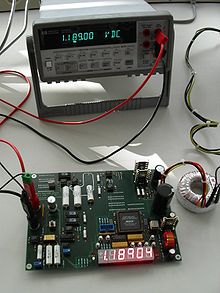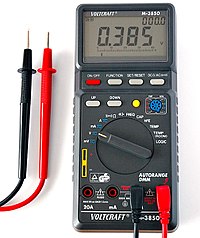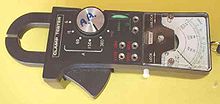
Eurocard is an IEEE standard format for printed circuit board (PCB) cards that can be plugged together into a standard chassis which, in turn, can be mounted in a 19-inch rack. The chassis consists of a series of slotted card guides on the top and bottom, into which the cards are slid so they stand on end, like books on a shelf. At the spine of each card is one or more connectors which plug into mating connectors on a backplane that closes the rear of the chassis.

VMEbus is a computer bus standard physically based on Eurocard sizes.
Futurebus, or IEEE 896, is a computer bus standard, intended to replace all local bus connections in a computer, including the CPU, memory, plug-in cards and even, to some extent, LAN links between machines. The effort started in 1979 and didn't complete until 1987, and then immediately went into a redesign that lasted until 1994. By this point, implementation of a chip-set based on the standard lacked industry leadership. It has seen little real-world use, although custom implementations continue to be designed and used throughout industry.

Data acquisition is the process of sampling signals that measure real-world physical conditions and converting the resulting samples into digital numeric values that can be manipulated by a computer. Data acquisition systems, abbreviated by the acronyms DAS,DAQ, or DAU, typically convert analog waveforms into digital values for processing. The components of data acquisition systems include:

IEEE 488, also known as HP-IB and generically as GPIB, is a short-range digital communications 8-bit parallel multi-master interface bus specification developed by Hewlett-Packard. It subsequently became the subject of several standards.
LAN eXtensions for Instrumentation (LXI) is a standard which defines the communication protocols for instrumentation and data acquisition systems using Ethernet.

CompactPCI is a computer bus interconnect for industrial computers, combining a Eurocard-type connector and PCI signaling and protocols. Boards are standardized to 3U or 6U sizes, and are typically interconnected via a passive backplane. The connector pin assignments are standardized by the PICMG US and PICMG Europe organizations. The connectors and the electrical rules allow for eight boards in a PCI segment. Multiple bus segments are allowed with bridges.
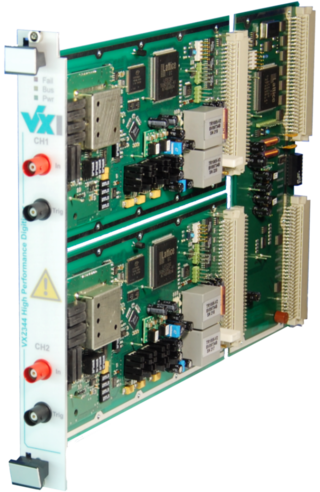
VME eXtensions for instrumentation bus refers to standards for automated test based upon VMEbus. VXI defines additional bus lines for timing and triggering as well as mechanical requirements and standard protocols for configuration, message-based communication, multi-chassis extension, and other features. In 2004, the 2eVME extension was added to the VXI bus specification, giving it a maximum data rate of 160 MB/s.

Automatic test equipment or automated test equipment (ATE) is any apparatus that performs tests on a device, known as the device under test (DUT), equipment under test (EUT) or unit under test (UUT), using automation to quickly perform measurements and evaluate the test results. An ATE can be a simple computer-controlled digital multimeter, or a complicated system containing dozens of complex test instruments capable of automatically testing and diagnosing faults in sophisticated electronic packaged parts or on wafer testing, including system on chips and integrated circuits.
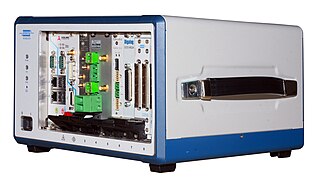
PCI eXtensions for Instrumentation (PXI) is one of several modular electronic instrumentation platforms in current use. These platforms are used as a basis for building electronic test equipment, automation systems, and modular laboratory instruments.
Instrument control consists of connecting a desktop instrument to a computer and taking measurements.

VPX, also known as VITA 46, is a set of standards for connecting components of a computer, commonly used by defense contractors. Some are ANSI standards such as ANSI/VITA 46.0–2019. VPX provides VMEbus-based systems with support for switched fabrics over a new high speed connector. Defined by the VMEbus International Trade Association (VITA) working group starting in 2003, it was first demonstrated in 2004, and became an ANSI standard in 2007.

The Standard Commands for Programmable Instruments defines a standard for syntax and commands to use in controlling programmable test and measurement devices, such as automatic test equipment and electronic test equipment.
M-Modules are a mezzanine standard mainly used in industrial computers. Being mezzanines, they are always plugged on a carrier printed circuit board (PCB) that supports this format. The modules communicate with their carrier over a dedicated bus, and can have all kinds of special functions.
An instrument driver, in the context of test and measurement (T&M) application development, is a set of software routines that simplifies remote instrument control. Instrument drivers are specified by the IVI Foundation and define an I/O abstraction layer using the virtual instrument software architecture (VISA). The VISA hardware abstraction layer provides an interface-independent communication channel to T&M instruments. Furthermore, the instrument drivers encapsulate the Standard Commands for Programmable Instruments (SCPI) commands, which are an ASCII-based set of commands for reading and writing instrument settings and measurement data. This standard allows an abstract way of using various programming languages to program remote-control applications instead of using SCPI commands. An instrument driver usually has a well-defined API.

Mass interconnect systems act as the connector interface between test instruments and devices/units under test (D/UUT) and are most often used in defense, aerospace, automotive, manufacturing, and other applications. By mating a receiver on the tester side with an interchangeable test adapter (ITA) on the UUT, a mass interconnect enables the entire system to mate together at one time. Mass interconnect systems are available in multiple sizes and configurations to accommodate virtually any testing requirement.
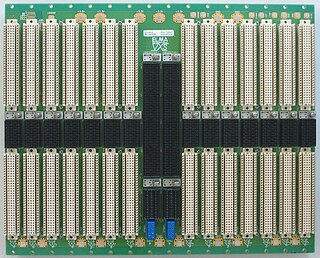
Elma Electronic is a publicly traded Swiss electronics company founded in 1960 and based in Wetzikon, Switzerland. The company has 5 product divisions: Systems Platforms, Backplanes, Enclosures & Components, Rotary Switches, and Cabinet Enclosures. The largest segment is systems packaging serving the military, aerospace, homeland security, medical and industrial markets. The Elma Bustronic division develops backplanes, including VME320, which was the world's fastest VME backplane in 1997. Elma Bustronic also develops backplanes in OpenVPX, VMEbus, VME64X, CompactPCI, MicroTCA, and custom bus structures. Elma is an executive member of the PCI Industrial Computer Manufacturers Group (PICMG), VME International Trade Association, and member of the OpenVPX Industry Working Standards Group.
Bustec is a company that designs and manufactures instrumentation for high-performance data acquisition and instrument control. The company's products serve applications that include engine testing, automotive and missile testing, wind tunnel data acquisition and control, acoustics, vibration applications, aircraft component testing and more. Headquarters is located in Shannon, Co. Clare, Ireland.
HiSLIP is a TCP/IP-based protocol for remote instrument control of LAN-based test and measurement instruments. It was specified by the IVI Foundation and is intended to replace the older VXI-11 protocol. Like VXI-11, HiSLIP is normally used via a library that implements the VISA API. Version 1.4 of the LAN eXtensions for Instrumentation (LXI) standard recommends HiSLIP as “LXI HiSLIP Extended Function for LXI based instrumentation”.

